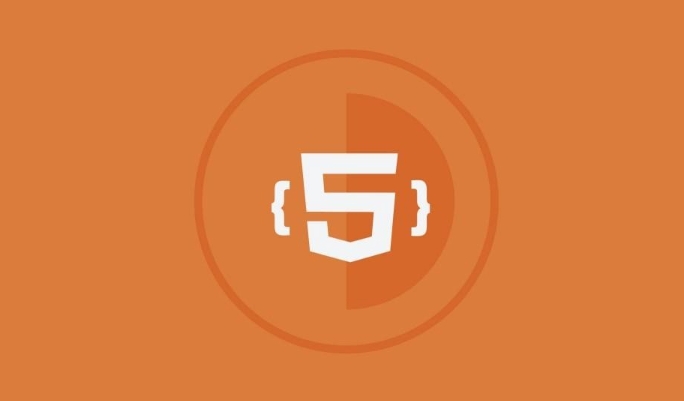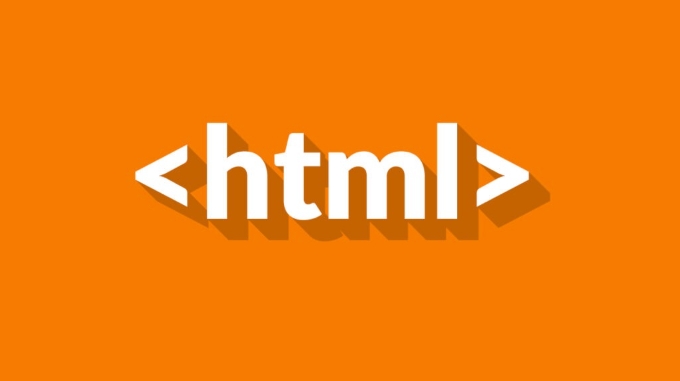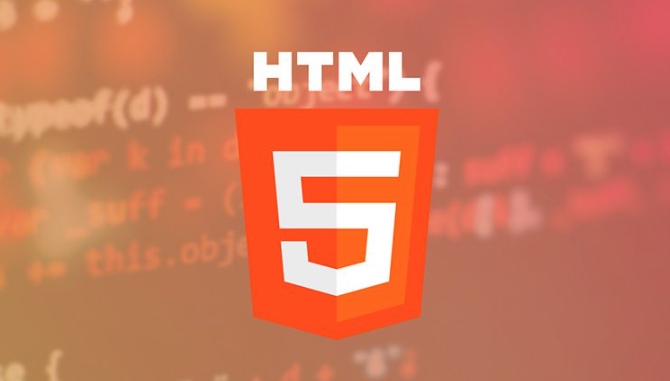The main difference between and and is in semantics. 1. is used only for bold styles, and does not indicate importance; means that the content is important. 2. is only used in italic style; means emphasis. 3. Screen readers have different ways of reading and . 4. Semantic tags improve accessibility and SEO. 5. Semantic tags should be used to explicitly express intentions.

The <b></b> and <i></i> tags in HTML are often used to make text bold or italic, which might lead some to think they're interchangeable with <strong></strong> and <em></em> . But there's a key difference: meaning . While the visual result might look similar in a browser, these tags carry different semantic meanings.
 and tags?" />
and tags?" /> Here's how they actually differ and when you should use each:
 and tags?" />
and tags?" />
<b></b> vs <strong></strong> – Styling vs Importance
- The
<b></b>tag is just about visual styling – it makes text bold without implying anything about its importance or emphasis. - The
<strong></strong>tag, on the other hand, adds semantic weight – telling browsers and screen readers that this part of the text is important.
For example:
- Use
<b></b>if you're just highlighting a word for visual reasons (like in a chat UI where bold means something specific but not urgent). - Use
<strong></strong>when you want to stress the importance of a message, like an error warning or a call to action.
Screen readers may announce content inside <strong></strong> with more emphasis, while <b></b> is usually read the same as normal text.
 and tags?" />
and tags?" />
<i></i> vs <em></em> – Italic styling vs Emphasis
- The
<i></i>tag simply makes text italic, again with no special meaning attached. - The
<em></em>tag indicates emphasis , and it's meant to be used when you want to convey a change in tone or highlight something as important.
Examples where <i></i> could be appropriate:
- Technical terms
- A character's thoughts in a story
- Ship names (like USS Enterprise )
Use <em></em> when you want the reader (or assistive device) to pay attention:
- “Please make sure you arrive on time.”
- “This offer ends soon!”
Again, <em></em> might be read differently by screen readers – maybe with a slight pause or change in tone.
When Does It Actually Matter?
Most of the time, people won't notice the difference visually. But here's where it matters:
-
Accessibility : Screen readers treat
<strong></strong>and<em></em>differently than<b></b>and<i></i>. - SEO : Search engines may give more weight to content marked up with semantic tags.
- Code clarity : Using the right tag helps others reading your HTML understand your intent.
If you're building a public-facing website or app, especially one that needs to meet accessibility standards, semantic tags are preferred.
So, while <b></b> and <i></i> still work fine for basic formatting, <strong></strong> and <em></em> are better choices when you care about meaning and accessibility. You can always style them with CSS to get the exact look you want
.
The above is the detailed content of What is the difference between HTML and tags?. For more information, please follow other related articles on the PHP Chinese website!

Hot AI Tools

Undress AI Tool
Undress images for free

Undresser.AI Undress
AI-powered app for creating realistic nude photos

AI Clothes Remover
Online AI tool for removing clothes from photos.

Clothoff.io
AI clothes remover

Video Face Swap
Swap faces in any video effortlessly with our completely free AI face swap tool!

Hot Article

Hot Tools

Notepad++7.3.1
Easy-to-use and free code editor

SublimeText3 Chinese version
Chinese version, very easy to use

Zend Studio 13.0.1
Powerful PHP integrated development environment

Dreamweaver CS6
Visual web development tools

SublimeText3 Mac version
God-level code editing software (SublimeText3)

Hot Topics
 Explain the purpose of the role attribute in ARIA.
Jun 14, 2025 am 12:35 AM
Explain the purpose of the role attribute in ARIA.
Jun 14, 2025 am 12:35 AM
ARIA's role attribute is used to define the role of web elements and improve accessibility. 1. Role attribute helps assistive technology to understand the functions of elements, such as buttons, navigation, etc. 2. Use role attributes to assign specific roles to non-semantic HTML elements. 3. The role attribute should be consistent with the element behavior and be verified by the accessibility tool test.
 HTML and Design: Creating the Visual Layout of Websites
Jun 14, 2025 am 12:39 AM
HTML and Design: Creating the Visual Layout of Websites
Jun 14, 2025 am 12:39 AM
How to create a website layout? 1. Use HTML tags to define the content structure, such as, ,. 2. Control styles and positions through CSS, using box model, float or Flexbox layout. 3. Optimize performance, reduce HTTP requests, use cache and optimize images, and ensure responsive design.
 How can you ensure your HTML code is readable and maintainable?
Jun 10, 2025 am 12:06 AM
How can you ensure your HTML code is readable and maintainable?
Jun 10, 2025 am 12:06 AM
Improve the readability and maintainability of HTML code can be achieved through the following steps: 1. Use semantic tags, such as, etc. to make the code structure clear and improve SEO effect; 2. Keep the code formatted and use consistent indentation and spaces; 3. Add appropriate comments to explain the code intention; 4. Avoid excessive nesting and simplify the structure; 5. Use external style sheets and scripts to keep the HTML concise.
 How do I stay up-to-date with the latest HTML standards and best practices?
Jun 20, 2025 am 08:33 AM
How do I stay up-to-date with the latest HTML standards and best practices?
Jun 20, 2025 am 08:33 AM
The key to keep up with HTML standards and best practices is to do it intentionally rather than follow it blindly. First, follow the summary or update logs of official sources such as WHATWG and W3C, understand new tags (such as) and attributes, and use them as references to solve difficult problems; second, subscribe to trusted web development newsletters and blogs, spend 10-15 minutes a week to browse updates, focus on actual use cases rather than just collecting articles; second, use developer tools and linters such as HTMLHint to optimize the code structure through instant feedback; finally, interact with the developer community, share experiences and learn other people's practical skills, so as to continuously improve HTML skills.
 How do I use the element to represent the main content of a document?
Jun 19, 2025 pm 11:09 PM
How do I use the element to represent the main content of a document?
Jun 19, 2025 pm 11:09 PM
The reason for using tags is to improve the semantic structure and accessibility of web pages, make it easier for screen readers and search engines to understand page content, and allow users to quickly jump to core content. Here are the key points: 1. Each page should contain only one element; 2. It should not include content that is repeated across pages (such as sidebars or footers); 3. It can be used in conjunction with ARIA properties to enhance accessibility. Usually located after and before, it is used to wrap unique page content, such as articles, forms or product details, and should be avoided in, or in; to improve accessibility, aria-labeledby or aria-label can be used to clearly identify parts.
 How do I create a basic HTML document?
Jun 19, 2025 pm 11:01 PM
How do I create a basic HTML document?
Jun 19, 2025 pm 11:01 PM
To create a basic HTML document, you first need to understand its basic structure and write code in a standard format. 1. Use the declaration document type at the beginning; 2. Use the tag to wrap the entire content; 3. Include and two main parts in it, which are used to store metadata such as titles, style sheet links, etc., and include user-visible content such as titles, paragraphs, pictures and links; 4. Save the file in .html format and open the viewing effect in the browser; 5. Then you can gradually add more elements to enrich the page content. Follow these steps to quickly build a basic web page.
 What is an HTML tag?
Jun 13, 2025 am 12:36 AM
What is an HTML tag?
Jun 13, 2025 am 12:36 AM
HTMLtagsareessentialforstructuringwebpages.Theydefinecontentandlayoutusinganglebrackets,ofteninpairslikeand,withsomebeingself-closinglike.HTMLtagsarecrucialforcreatingstructured,accessible,andSEO-friendlywebpages.
 How do I create checkboxes in HTML using the element?
Jun 19, 2025 pm 11:41 PM
How do I create checkboxes in HTML using the element?
Jun 19, 2025 pm 11:41 PM
To create an HTML checkbox, use the type attribute to set the element of the checkbox. 1. The basic structure includes id, name and label tags to ensure that clicking text can switch options; 2. Multiple related check boxes should use the same name but different values, and wrap them with fieldset to improve accessibility; 3. Hide native controls when customizing styles and use CSS to design alternative elements while maintaining the complete functions; 4. Ensure availability, pair labels, support keyboard navigation, and avoid relying on only visual prompts. The above steps can help developers correctly implement checkbox components that have both functional and aesthetics.






